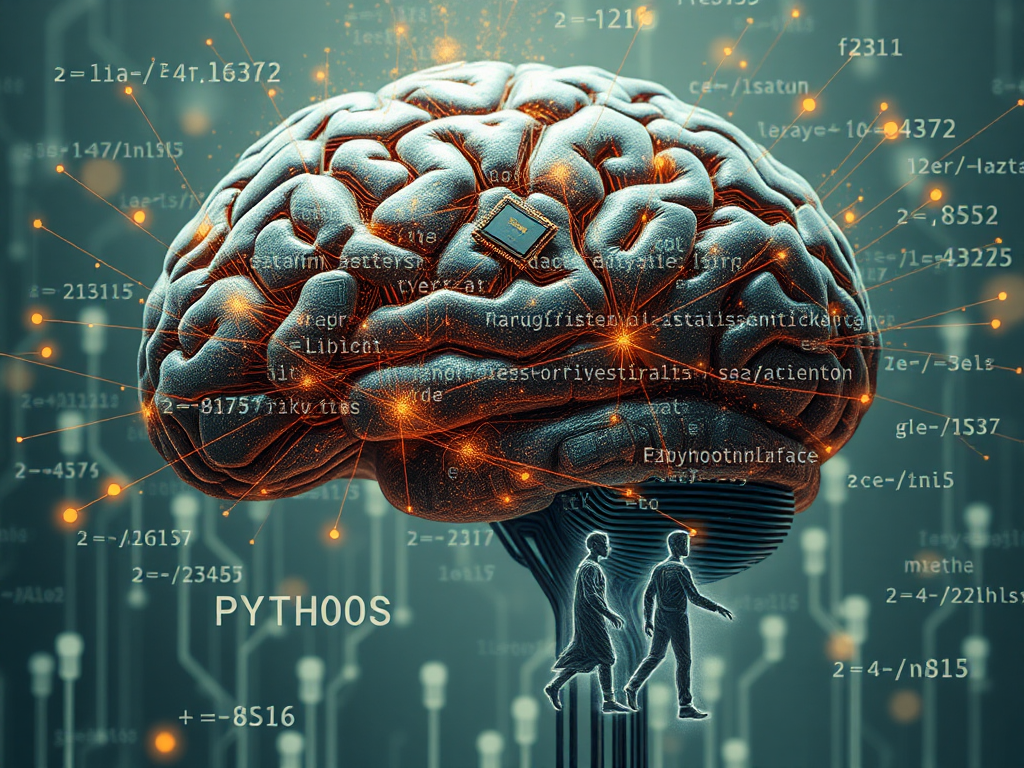Getting Started
Are you interested in machine learning but don't know where to begin? Don't worry, follow along with me step by step, and you'll soon be able to get started with Python machine learning! This article will walk you through the theoretical foundations of machine learning, practical tools, model building, optimization techniques, and data processing tips, ensuring you have a comprehensive understanding. Without further ado, let's dive right in!
Building a Solid Theoretical Foundation
To learn machine learning thoroughly, a theoretical foundation is crucial. First, you need to grasp certain mathematical and statistical knowledge. Why is this necessary? Many machine learning algorithms are built on mathematical principles, and if you can't understand basic concepts, you'll struggle when writing algorithms or debugging code in the future. Additionally, you need to understand data mining concepts, which will help you see the essence of algorithms. Does theory sound boring? Don't worry, once you master the core concepts, you'll be able to easily get started with practical applications!
Hands-on Practice
While theory is important, it ultimately needs to be put into practice. For Python machine learning practice, you need to master the following libraries:
- Numpy: This library provides support for matrix operations, which are frequently used in machine learning.
- Pandas: Used for data preprocessing and cleaning, keeping your data "clean and tidy."
- Matplotlib: Creates beautiful data visualization charts, presenting results intuitively.
- Scikit-learn: The de facto standard in the machine learning field! Countless popular algorithms are implemented in it.
Once you've mastered these libraries, you can start hands-on practice. But don't rush, I've prepared two excellent learning resources for you:
- Andrew Ng's Coursera Machine Learning course, arguably the best choice for beginners!
- Sebastian Raschka's book "Python Machine Learning," comprehensive in content and rich in examples.
By studying these resources, your confidence in Python machine learning will surely grow day by day. When you feel you have a solid foundation, you can also look for tutorials on platforms like Udemy to further solidify your knowledge.
Building Models
Alright, now let's look at how to build machine learning models using Scikit-learn! Building a model typically involves the following basic steps:
Data Preprocessing
Before starting to train the model, you need to preprocess the data. This includes filling in missing values, performing feature scaling, etc., to ensure the data is "clean and tidy." Data quality directly affects the model's performance, so this step is crucial!
Model Selection and Training
Next is selecting the appropriate algorithm and training the model using training data. Scikit-learn has many ready-made algorithms to choose from, and you can try different algorithms to see which one performs best on your data.
Model Evaluation
After training the model, you need to evaluate its performance on test data. Usually, some evaluation metrics are used, such as accuracy, F1 score, etc. Cross-validation should also be performed to ensure the model's generalization ability.
Model Optimization
Building a model alone is not enough; we need to further optimize it to improve its performance. The key to optimization lies in handling overfitting and underfitting:
Overfitting and Underfitting
- Overfitting refers to a model being too complex, fitting the training data too closely, and thus performing poorly on new data.
- Underfitting is when the model is too simple and unable to capture the essential patterns in the data.
You can determine whether a model is overfitting or underfitting by observing its performance on both the training and test sets.
Solution Strategies
- Methods to solve overfitting include: using regularization techniques, reducing the number of features, or choosing a simpler model.
- Methods to solve underfitting include: increasing model complexity, providing more training data, etc.
Hyperparameter Tuning
Another technique that can improve model performance is hyperparameter tuning. Hyperparameters are parameters that need to be specified before training, such as regularization strength, maximum depth of decision trees, etc. Choosing the right combination of hyperparameters is crucial for the model's performance!
You can use techniques like Grid Search or Random Search to systematically explore different hyperparameter combinations and find the optimal set. During this process, pay close attention to how each hyperparameter affects the model and adjust according to the specific problem.
Data Processing Techniques
In addition to optimizing the model itself, we also need to master some data processing techniques to maintain high-quality data.
Handling Missing Data
Real-world data often has missing values, and how to handle them becomes particularly important. You can choose to delete missing values or fill them with mean, median, or mode values. Another more advanced method is to use interpolation or predictive models to estimate missing values.
When choosing a specific method, it's important to fully understand the context and background knowledge of the data, as different handling methods can have a significant impact on the final results.
Feature Engineering
Feature engineering is also a crucial step that can help you extract more valuable features from raw data. Common techniques include:
- Feature selection: Choosing a subset of features from existing ones that have a greater impact on the model.
- Feature creation: Constructing entirely new features to better capture the essential characteristics of the data.
Feature engineering requires a deep understanding of the problem domain, as well as creativity and professional expertise. Only by building a high-quality feature set can the model's performance be further improved.
Looking Ahead
By now, you should have a comprehensive understanding of Python machine learning. Of course, machine learning is a vast field, and this article is just a starting point, showing you the gateway to this domain. The road ahead is long and requires continuous learning and practice.
Here are a few suggestions for you:
- Hands-on practice is crucial; only by operating yourself can you deepen your understanding.
- Maintain curiosity, stay updated with industry trends, and learn about the latest algorithms and models.
- Don't be confined to existing knowledge; keep an open mind and be brave in trying new things.
I wish you all the best on your machine learning journey, with abundant harvests! If you have any questions, feel free to ask me anytime. Let's share, progress together, and embark on an infinitely exciting machine learning journey!







